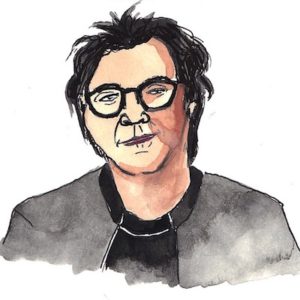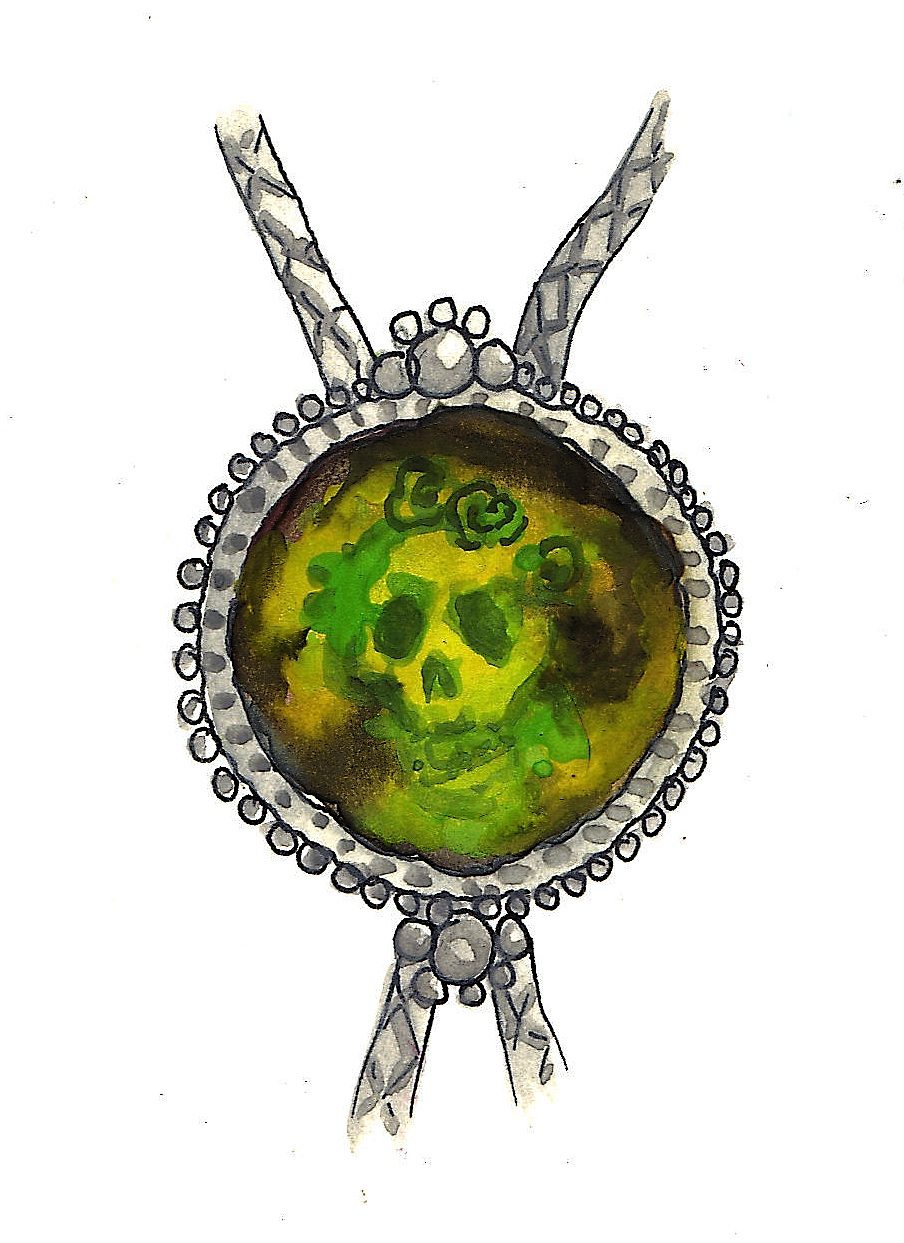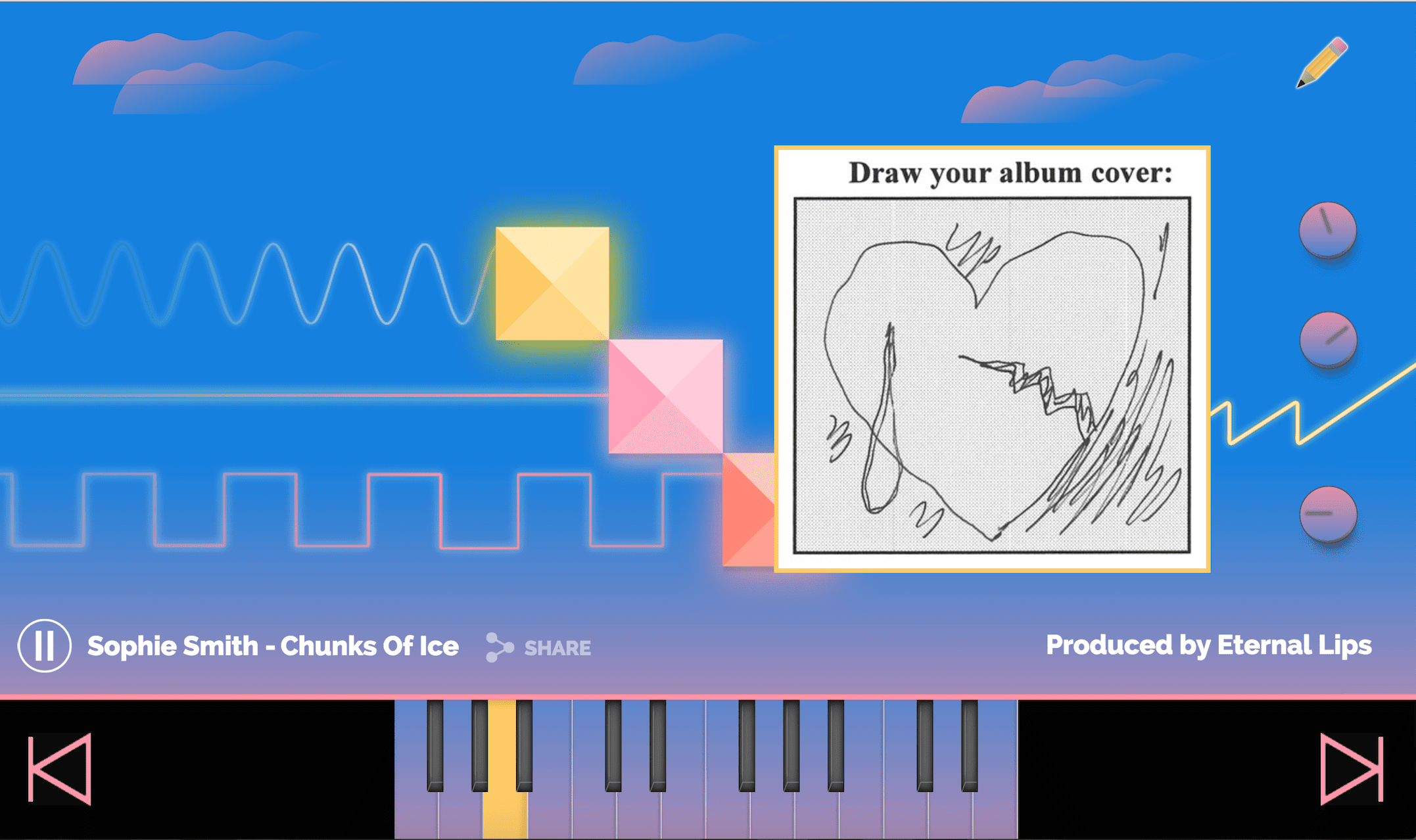
A friend of my parents, who was the girlfriend of a roadie for the Grateful Dead, gave me this hologram skull and roses bolo tie when I was around five years old. It’s a common Grateful Dead image, which you can see on some of their records. The color changes when you move it, which is really cool. The tie is totally homemade, and the back is actually made of cardboard. It’s the kind of thing you might find someone selling in the parking lot at one of the band’s shows.
My folks were really into the Dead. In 1973 they even opened a store called “Sugar Magnolia” in Chicago. They had an “extended family” business relationship with the band and its organization, and occasionally members would come to shop in the store. And when the Dead played in town, I would play backstage with the band members’ kids. It was like full-on anarchy.
Sugar Magnolia wasn’t a head shop—that’s the funny thing. It was actually a women’s boutique that sold a lot of vintage stuff. And many people who shopped there didn’t even know who the Dead were. Over the years, the store has had a lot of different incarnations, but the Grateful Dead remained a really big part of my parents’ life together. By extension, it’s something I grew up around, and as I get older I see how much it has shaped my outlook.
Most of what I heard growing up was bootleg recordings made at their shows. The tapes were dubbed a thousand times, and traded from person to person. The sound quality was awful and I don’t even know how much of the music I could actually hear, but what moves me is the idea of the band playing in the moment and the audience embracing all of the imperfection.
I see the same thing in Neil Young, another musician I grew up hearing a lot. A couple of years ago, I saw him playing at Carnegie Hall. He hadn’t played there since the early 70s. There was no “reason” for this show, no new record release. Just out of nowhere it was announced that he’d be playing four shows.
It was just Neil Young, some guitars, and a piano. It was so raw and candid! It felt like you were with him in his living room and he was just telling you stories—not a prepared script, but a spontaneous conversation with the audience. It was more about feeling than execution. I was so inspired by that. It’s hard to accept your own imperfections but sometimes those imperfections are what give your work its identity.
A lot of times when people make a record today, they put down a scratch track. Everyone overdubs on top of it, and then in the end you come in and sing on top of that. The way we make music now, we can see it as we’re editing it, and that lends itself to an enormous amount of second-guessing and micro tweaking. Most songs you hear on the radio, even “indie” stuff, has been heard by the artist hundreds or even thousands of times before it’s even released.
A few years ago I did a project called Eternal Lips. It was an attempt to create music that could engage with the commercial music system while still being interesting. I tried to write some “pop” music and some of those songs got radio play. The experiment succeeded but I didn’t feel personally in it the way I wanted to be.
Then I did a project called “Custom Melodies” (an exhibit at a small museum in New York’s Chinatown called Mmuseumm). It was an interactive custom song factory, where the lines between performer and audience were completely blurred. You would make an appointment, come to the museum and fill out paperwork about your life, your dreams, and your best advice.
You would then design your own record cover, and come and see me. I would be in this booth surrounded by instruments and I would look at what you wrote and drew, and talk to you about it. One of your responses would feel like a lyric to me, and I would record you saying it and then I would build a full track around that within about ten minutes and record it with my phone.
After we made the recordings, I posted them on an interactive public website where other people could hear them, and could connect with each other through music and sound. You only have their voice, first name, and nickname or a band name they chose. The only visual representation you see of them is the fantasy one they chose for their album cover. We often walk down the street or see people on the subway, and when they don’t look like us we sometimes negate their experience. But Custom Melodies gave the people permission to be really honest, and it allowed others to relate to their feelings, and feel connected.
Doing that project brought me to a place where I could start thinking differently about what music or art could inspire in others. When I was making my current record, Naked Light, I said to my friend Shahzad Ismaily, who co-produced it, that I wanted to allow myself to be present. A lot of the music was recorded overnight when I was tired and less able to think about the fact that I was recording, or that these songs would be released, or that any particular song would be the “single.” I wanted to be so free that I could even let myself cry on the record!
[soundcloud url=”https://api.soundcloud.com/tracks/260062557″ params=”color=ff5500&auto_play=false&hide_related=false&show_comments=true&show_user=true&show_reposts=false” width=”100%” height=”166″ iframe=”true” /]
Next I thought about how to bring this record into the world in a way that would preserve its vulnerability and intimacy. The idea of putting a band together, rehearsing it to death, and doing a tour of rock clubs didn’t make sense. Instead I decided to have a show at the Emily Harvey Foundation, a small loft space in Soho where no one would know what to expect. I set the time frame from sunset to sunrise, a nine-hour period where people could come and go as they please and stay as long as they want. I wanted to give more power and responsibility to the audience. Everyone could get to see something different and have a different experience of the show.
It worked. Around 3 a.m. it stopped feeling like a show as the lines between audience and performer became very blurry. Someone from the audience spontaneously took the mic and starting singing songs. It was a really great experience. I loved that no one (myself included) knew what would happen at any given moment. It felt alive and uncontrolled, it’s good to trust the unknown.
There’s no direct through-line between the music I make and the music of the Grateful Dead or Neil Young, but there is a philosophical one. I think I’ll keep my bolo tie forever. I never wear it, but it’s still a musical keepsake.
***
Wanted/Needed/Loved: Musicians and the Stuff They Can’t Live Without is an illustrated column where musicians share the stories behind meaningful objects. As told to Allyson McCabe and illustrated by Esme Blegvad.
***
Grey Gersten is a Brooklyn-based musician whose work has been described by Rolling Stone as “bend[ing] and contort[ing] the idea of pop music, channeling his experimental music background into dreamy indie-pop.” Active in NYC’s experimental rock and art community, Gersten has collaborated with an eclectic mix of revered artists including Tom Sachs, John Zorn, TV on The Radio and Michael Hurley. “Push Your Heart Against The Screen,” a track from his new album Naked Light, is about the bridge between humans and machines. The video for the track is complemented by a stunning series of photos taken by NASA’s Cassini Imaging Science Subsystem, and you can watch it here.







